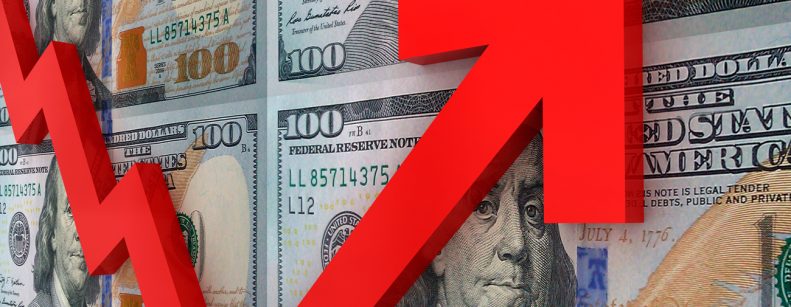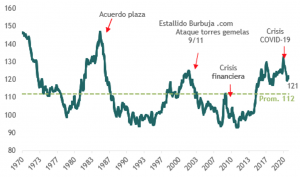
The risk that U.S. monetary policy will normalize sooner rather than later has offered support for the dollar, but is unlikely to be the dominant factor in currency markets.
The difference between growth in the U.S. and the rest of the world is often a major driver of the dollar. This is because relative growth rates are an important factor in the relative paths of monetary policy. In addition, capital tends to flow to higher growth regions, triggering a self-reinforcing cycle of currency appreciation. In the coming months, improvements in economic growth in Europe and Asia should outpace those in the U.S. This can be seen in Citi's economic surprise index, as U.S. data releases no longer surprise estimates.
The strong U.S. recovery in 2021 has been driven by its rapid launch of Covid-19 vaccination, but as other nations launch at a faster pace, those economies are already removing restrictions and should therefore benefit from the pent-up demand that has helped the U.S. so far.but as other nations launch at a faster pace, those economies are already removing restrictions and should therefore benefit from the pent-up demand that helped the U.S. so far this year. Finally, the economies of Asia and Europe are helped by a growing U.S. trade deficit.
When the Fed announced a tapering of monetary stimulus in 2013 (taper tantrum), emerging market currencies plunged, reinforcing the strength of the US dollar. This time, EMs are better prepared. In fact, the Brazilian real, one of the so-called "five fragile" currencies in the taper tantrum, has risen against the US dollar since last Wednesday and has been one of the best performing currencies globally, supported also by a process of monetary normalization, (making the carry trade more attractive), a path that other EM central banks, including ours, would go down, by the way.
Finally, the dollar remains overvalued by approximately 8% in real terms, in contrast to 2013, when it was undervalued by 10%.Unlike in 2013, when it was undervalued by 10%.
Relative growth is the biggest factor impacting dollar performance

Source: Gavekal
The dollar is still 8% above its long-term averages in real terms
US Dollar Real Effective Rate Index (January 1994=100)
